India Travel Tips – Things to Know Before Your Travel to India
Are you ready to discover more about India? So, this blog post include some things that you should know when you decide to visit this interesting country. Below are all the basics such as deciding when is the best time to travel, how to get the right visa, and even what to wear. Using these tips, you’re ready for an incredible experience in India.
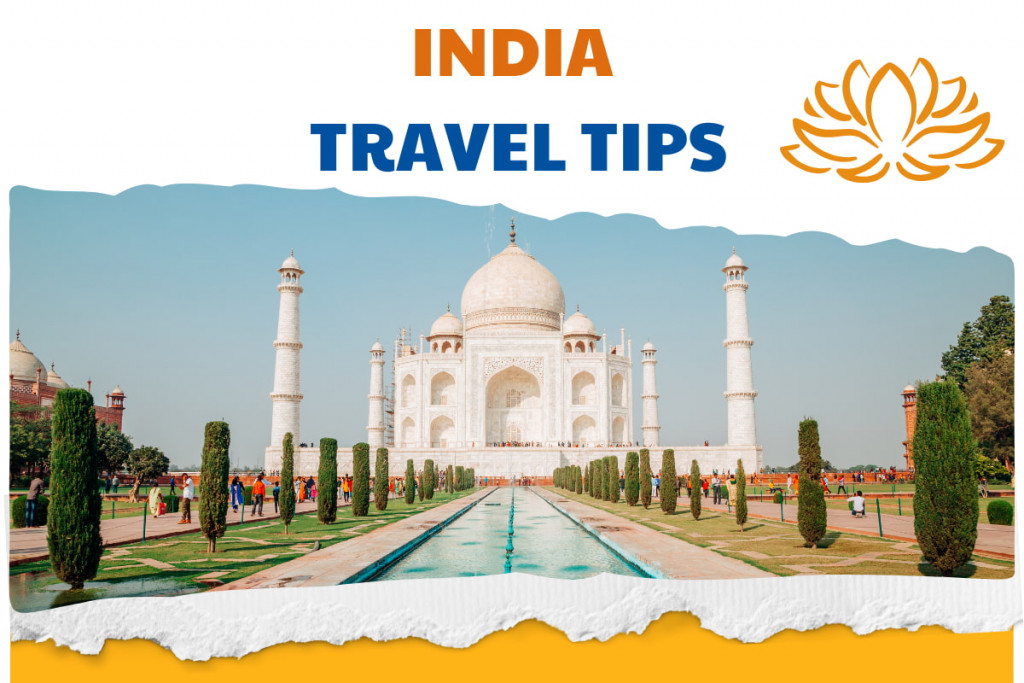
I. Is India Safe for Travel?
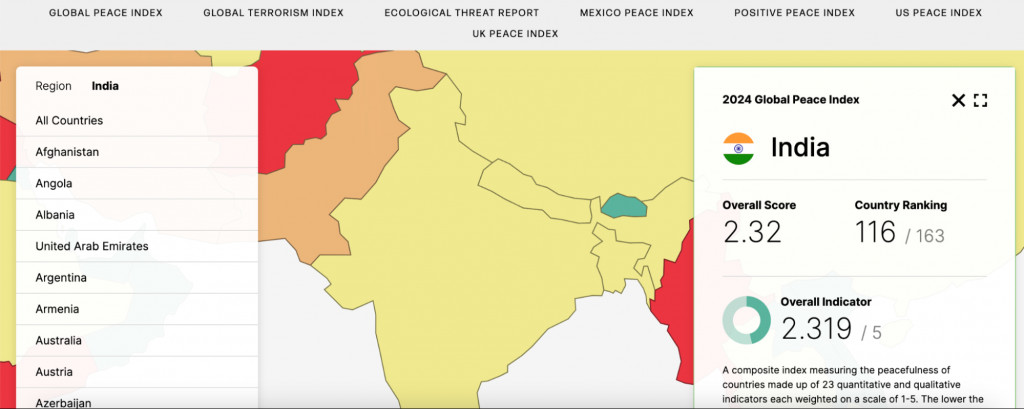
India is not really safe. You may face scams, crime, and unsafe road conditions. Some areas have political unrest. Women travelers may experience harassment. Poor sanitation leads to some health problems. However, if you still want to spend time exploring this exciting country, here are some tips for you:
- Be vigilant with personal belongings in crowded places
- Opt for bottled water and be wary of street food
- Use reputable transportation services recommended by hotels
- Dress modestly, especially in more conservative areas
- Travel in groups when possible, particularly for women
- Get recommended vaccinations before your trip
- Purchase comprehensive travel insurance
II. What is the est time to visit India?
The best time to visit India varies depending on the region because the weather varies depending on where you go.
Generally, the winter months, starting from November and up to March, are the most favorable season. It hardly rains, and the temperatures are moderate in places such as Delhi, Agra, Rajasthan, and others. Nonetheless, the northern mountains may sometimes be very cold and can be hard to navigate, especially because of snow.
Summer extends from April to June, and the heat is scorching, especially in central and northern regions, with temperatures sometimes exceeding 40oC (104oF). This can make sightseeing rather difficult, but it is an ideal time to visit higher-altitude hill stations or for wildlife watching in national parks.
The monsoon period is between July and September, and heavy rainfall occurs all over the country. Though it can cause inconvenience when planning a journey, it creates a green landscape and is ideal for Ayurveda treatments in Kerala.
III. Visa for India
Types of Visas Available for Tourists:
- Tourist Visa (TV): This service are ideal for tourists, visitors on business or those who intend to go visit friends and relatives in India.
- E-Visa (Electronic Visa): For travelers from the countries that can apply online and get the electronic visa.
- Business Visa (BTV): This is for business travelers, entrepreneurs, and other working individuals visiting India on business or for work.
- Conference Visa (CIV): For the participants coming to India for attending the conferences, seminars, or workshops.
- Medical Visa (MEDV): For travelers in pursuit of health care and treatment in India.
- Transit Visa (TVS): For foreign travelers who are visiting India and will proceed to another country.
IV. Do I Need a SIM Card for India?
Getting an international SIM card or a local data plan is a good idea when visiting India. This keeps you connected for maps, ride-hailing apps, local calls, and information. An Indian SIM card helps avoid high roaming fees from your home carrier.
Tourists can buy SIM cards at airports or local shops, but it can be tricky. You’ll need paperwork, proof of a local address, and passport copies; activation can take hours or even days.
Many travelers now prefer eSIMs, which lets you digitally activate a local data plan without changing physical cards. A reliable option is esimindia.net, from GIGAGO, a top eSIM provider in Hong Kong.
Their eSIM plans come with several features: you can choose from 7 packages priced between $6.5 and $156. They work with Jio India for internet services, offering 3GB to 20GB data options or daily plans of 1GB to 2GB. Customer support is available 24/7 through email and phone. Plus, the eSIM QR code and installation guide are delivered instantly to your email within only 5 minutes.
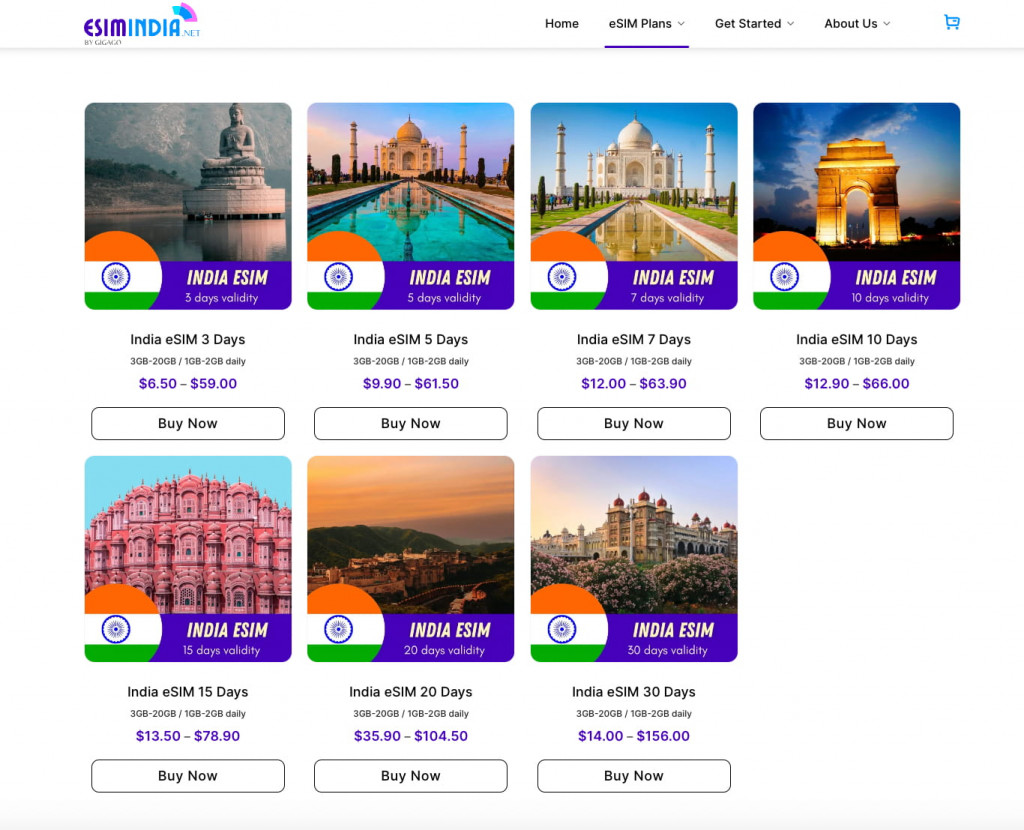
V. What to Pack for India?
Clothing:
- Lightweight and breathable clothing: Casual, comfortable, and possibly light-colored outfits that allow the skin to breathe; casual wear includes cotton apparel, t-shirts, tank tops, and shorts, especially if the day is very hot.
- Long-sleeved shirts and pants: For the cooler temperatures at night for temple visits or when travelling in the village or rural area.
- Comfortable walking shoes: Proper for urban Sojourns and mountaineering in the countryside.
- Sandals/flip-flops: Essential for swimming on the beach or in the pool.
- Warm layers: For the winter season of North India.
- Modest clothing: Temple garnishes or scarves/ shawls to cover the shoulders and knees, especially when visiting temples or mosques.
Accessories:
- Sun hat/umbrella: For sun protection.
- Sunglasses: To protect eyes from the sun.
- Power adapter: Charging electronic devices (Type D, M, or C).
- Water bottle: To stay hydrated.
- Reusable bag: For shopping and carrying essentials.
- Travel-size essentials: Toiletries, such as toothbrushes, toothpaste, and shampoo.
- Earplugs and eye mask: For better sleep in noisy or bright environments.
Documents:
- Passport: Make sure it’s valid for at least six months after your return date.
- Visa: Check if you need a visa and get it before you travel.
- Travel insurance: To cover unexpected medical or travel costs.
- Flight plan: Keep a copy of your flight schedule and hotel booking.
- Driver’s license: If you want to rent a car or scooter.
- Travel-size copies: Such as your passport and ID.
Don’t forget to look at the weather report before you leave and change your packing list if needed. It’s also smart to pack clothes that you can easily mix and match to make different outfits.
VI. How Much Does a Trip to India Cost?
Planning a trip to India can be fun, but knowing the costs is important. Let’s break down a sample budget for different travel styles:
| Expense Category | Budget | Mid-range | Luxury |
| Flights (round-trip) | $800 | $1,200 | $2,500 |
| Accommodation (per night) | $10-30 | $50-100 | $200+ |
| Food (per day) | $5-10 | $15-30 | $50+ |
| Transportation (per day) | $5-10 | $15-30 | $50+ |
| Activities (per day) | $10-20 | $30-50 | $100+ |
| Visa | $80 | $80 | $80 |
| Travel Insurance | $50 | $100 | $200 |
For a 10-day trip, budget travelers might spend around $1,500-$2,000, mid-range travelers $3,000-$4,000, and luxury travelers $7,000 or more.
To save money on your India trip:
- Travel during the off-season (April to September)
- Use public transportation like trains and buses
- Stay in budget accommodations or hostels
- Eat at local restaurants and try street food
- Book flights and accommodations in advance
- Use a mix of paid and free activities
Remember, these are rough estimates, and your actual costs may vary. Budgeting a little extra for unexpected expenses or spontaneous experiences is always a good idea.
VII. Best Things To Do in India
India has both a vibrant culture and extreme history, along with beautiful nature and numerous things to offer to tourists. Here are some prominent places:
1. Taj Mahal (Agra)
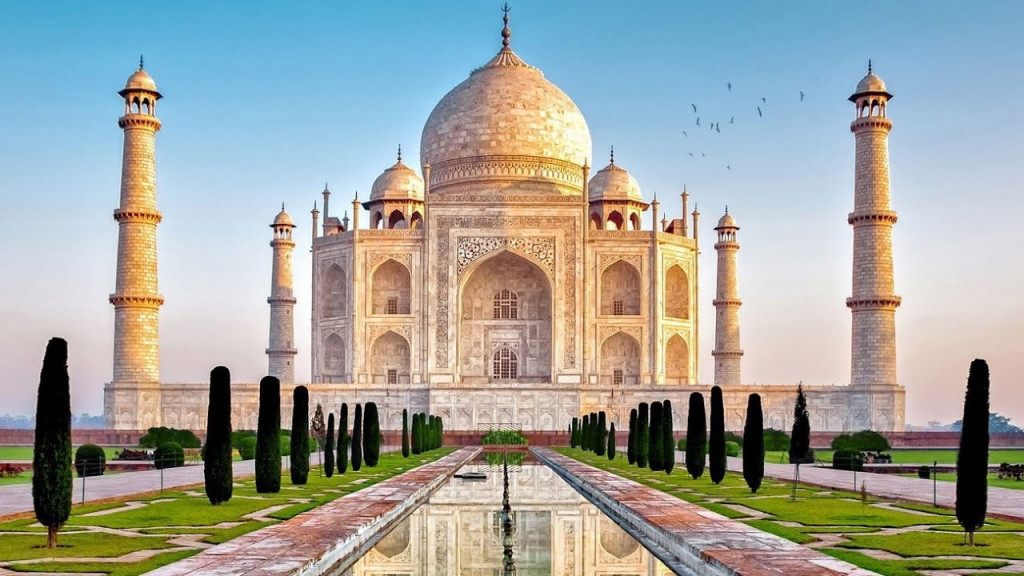
The Taj Mahal is a famous white marble building with some significant architectural features in India. Mughal Emperor Shah Jahan constructed Humayun’s Tomb to symbolize eternal love for his beloved wife Mumtaz Mahal. One can visit it at sunrise or sunset to fully appreciate the scenic beauty of the place.
- Location: Agra, Uttar Pradesh
- Hours: 6 AM – 7 PM daily, closed Fridays for prayers.
- Cost:
- Indian citizens: ₹50 ($0.6)+ ₹200 ($2,3) (main mausoleum)
- Foreign tourists: ₹1,300 ($15.5) + ₹200 ($2.3) (main mausoleum)
- SAARC and BIMSTEC citizens: ₹540 ($6.4) + ₹200 ($2.3) (main mausoleum)
- Children under 15: Free
2. Explore the Golden Temple (Amritsar)

Critical tourist attractions include the Golden Temple, a religious place in the Sikh world. Awe, for the imposing structures, take a holy dip in the sarovar, and taste non-vegetarian langar.
- Location: Amritsar, Punjab
- Hours: 24/7
- Cost: Free
3. Take a Houseboat Cruise in Kerala
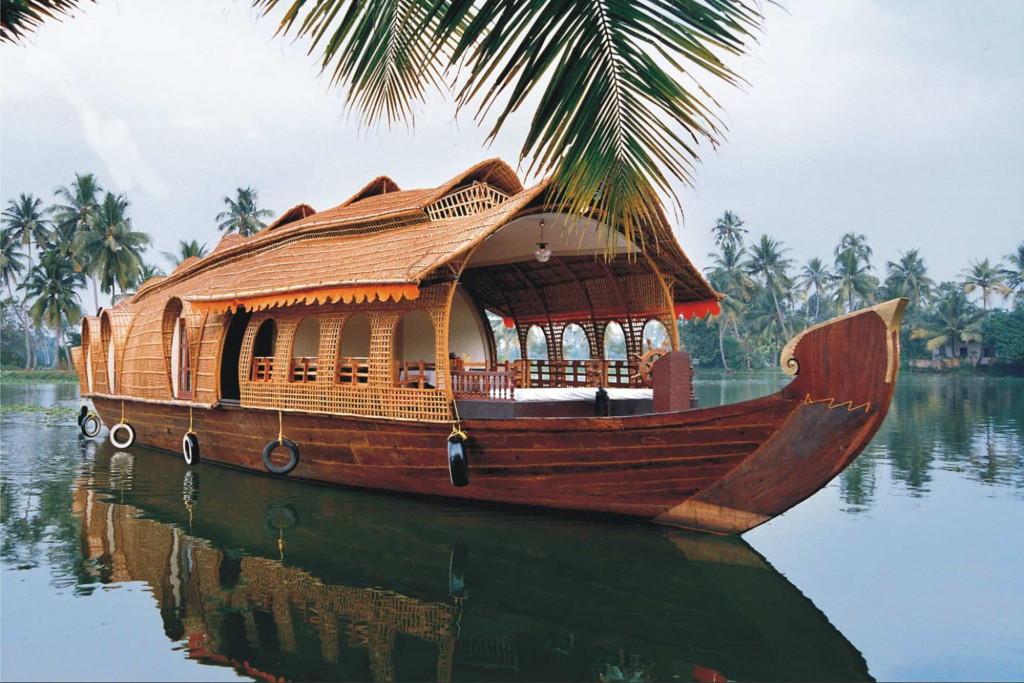
Travel Kerala upcountry by houseboats, riding through the backwater canals and watching the sunset amidst the calm waters and the green backdrop. Experience regional dishes and various tastes of food and beverages and rest in a calm environment.
- Location: Alleppey, Kerala
- Cost: ₹8,000 – ₹15,000, approximately $110 – $200 USD per night
4. Visit the Vibrant Streets of Old Delhi
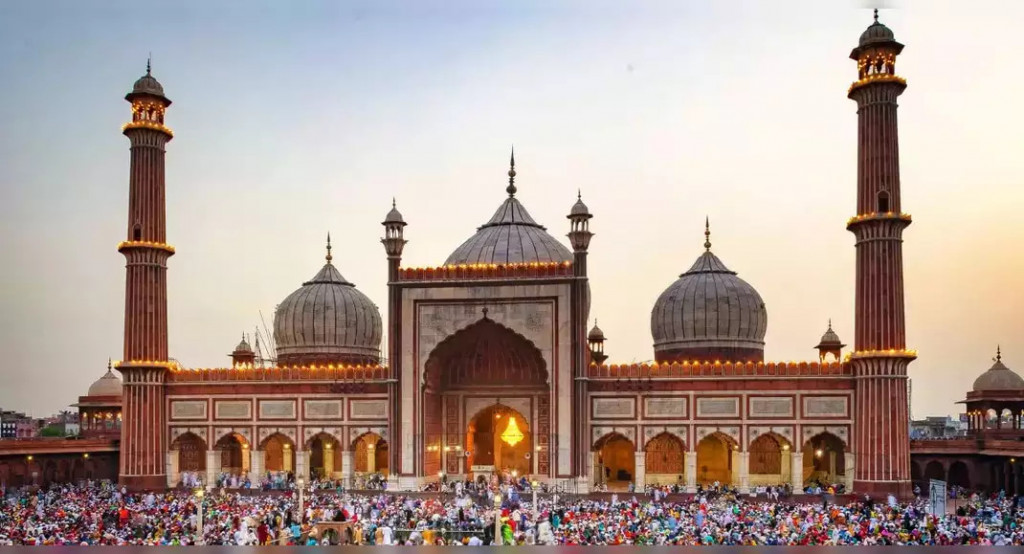
Wander around Old Delhi, where the busy streets exude a cluttered yet intriguing energy. Visit the locality, dine in the roadside eateries, and shop at places like Red Fort and Jama Masjid.
- Location: Old Delhi, Delhi
- Hours: 24/7
- Cost: Free
5. Go Trekking in the Himalayas (Ladakh)
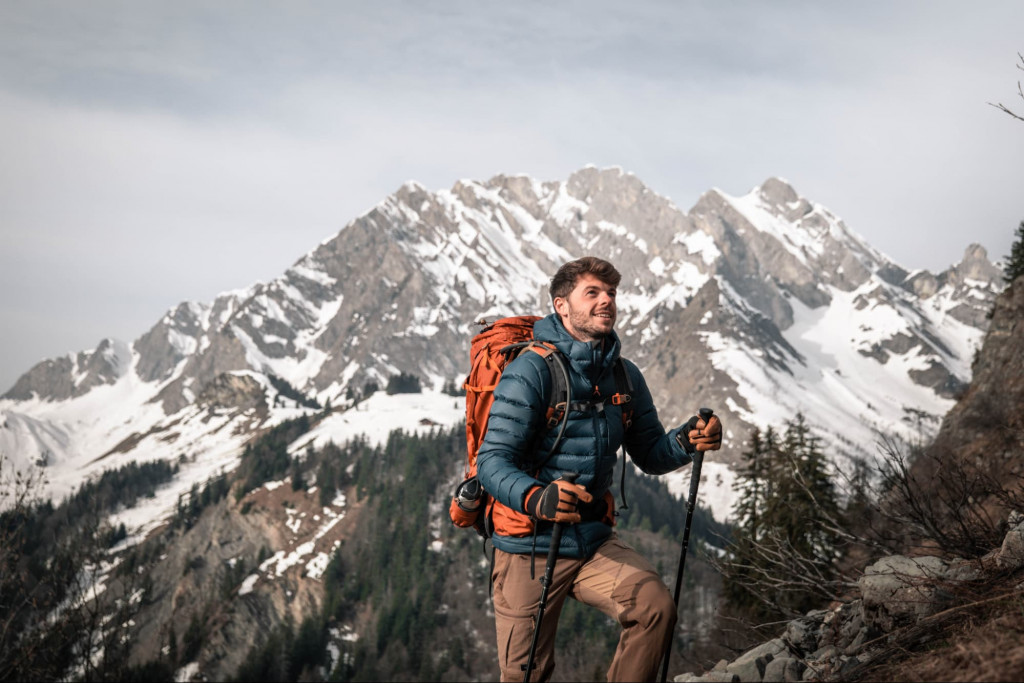
Trek through the mountains of Ladakh, the ballerina of the Himalayas. Carry hiking to the valleys, monasteries, and villages on the hills, and you will see the beautiful views.
- Location: Ladakh, Jammu and Kashmir
- Cost: ₹5,000 – ₹10,000, approximately $70 – $140 USD per day
VIII. What to Buy in India?
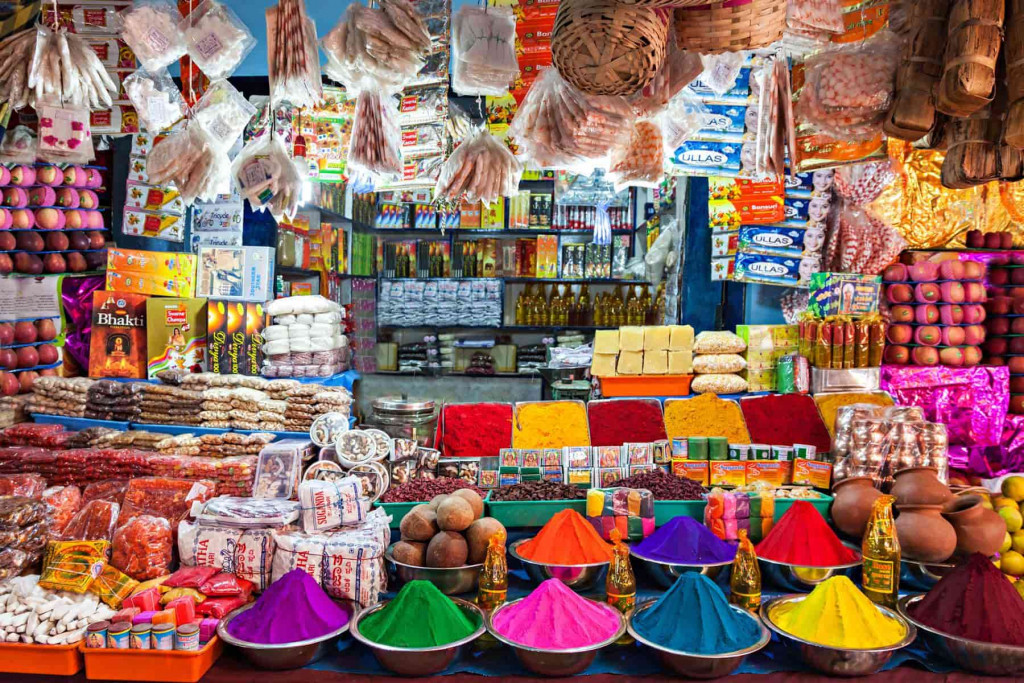
Shopping is one of the parts of India culture. Again, it is not about consuming it is about bargaining, waiting, and admiring the country’s work. As for things, India has everything you need, whether you need souvenirs, handicrafts, or modern clothing.
1. Popular Items to Buy in India
- Textiles and Fabrics
- The silk sarees woven in handlooms, the rich and vibrant wears embroidered on fabrics and the scarves designed with excellent weaving work.
- Best places to buy: Moda, Anokhi and local stores in Jaipur, New Delhi and Mumbai
- Jewelry and Accessories
- Beautifully crafted gold and silver ornaments, different colored gems, and fine handicraft articles.
- Best places to buy: Johari Bazaar in Jaipur, Chandni Chowk in Delhi, and markets in Mumbai are rather famous.
- Handicrafts and Home Decor
- Painted table settings, ornaments, wooden beds, and dressers, and carved wooden souvenirs.
- Best places to buy: The Dilli Haat in Delhi, the Crafts Village in Mumbai, and even local markets in Rajasthan.
- Spices and Tea
- Aromatic spices, flavorful teas, and traditional Indian sweets
- Best places to buy: Local markets in Delhi, Mumbai, and Kerala
- Fashion and Apparel
- Bollywood-inspired clothing, traditional Indian wear, and modern fashion
- Best places to buy: Local markets in Mumbai, Delhi, and Bangalore
When bargaining, knowing the market price of what you want is important. Begin with a lower offer and be respectful throughout the process. Don’t hesitate to walk away if the price doesn’t feel right. Learning a few basic Hindi phrases like “kitna hai?” (how much?) and “thoda kam karo” (reduce the price a bit) can also help you communicate better.
IX. What to eat in India?

Indian cuisine is a colorful mix that shows the country’s rich culture. With a history of thousands of years, it has changed over time, shaped by different regions and traditions. Now, let’s check out what India serves you.
1. Must-Try Indian Dishes
Here are some popular Indian dishes you should try when visiting India:
- Tandoori Chicken: Marinated chicken cooked in a clay oven, served with creamy tomato sauce.
- Biryani: A flavorful rice dish made with aromatic spices, basmati rice, and marinated meat or vegetables.
- Naan Bread: Leavened, butter-topped flatbread, perfect for scooping up curries and sauces.
- Palak Paneer: Creamy spinach curry with paneer (Indian cheese), spinach puree, and spices.
- Samosas: Crunchy fried or baked pastries filled with spiced potatoes, peas, and onions.
2. Where to Find the Best Street Food and Restaurants?
- Chandni Chowk in Old Delhi: Known for its mouth-watering kebabs, parathas, and chaat.
- Mumbai’s Street Food: Try the famous vada pav, pani puri, and bhelpuri at street food stalls in Mumbai.
- Hyderabad’s Biryani: Savor the flavorful biryani at restaurants and street food stalls in Hyderabad.
For an upscale dining experience, consider visiting Indian Accent in New Delhi for modern Indian dishes, Wasabi by Morimoto in Mumbai for a tasty Japanese-Indian fusion, and Karavalli in Bangalore for traditional South Indian food. Each offers a unique flavor that’s sure to delight!
X. Getting Around India
India’s transportation system has many options for different budgets and preferences. There are many ways to get around this diverse country, from trains and buses to taxis and rickshaws.
Transportation Options in India
- Train: Prices differ by class. General class can cost as low as ₹150 for short trips, while AC 1st Class might reach ₹2,500 or more for long distances.
- Bus: Fares depend on the service type (state-owned, private, AC, non-AC). Long-distance buses can charge between ₹200 and ₹3,000.
- Taxi: In cities like Delhi, the base fare starts at ₹25 for the first kilometer, with ₹14-16 for each additional kilometer. Services like Uber or Ola offer clearer pricing.
- Rickshaw (Tuk-tuk): Auto-rickshaws start at ₹30 for the first 1.5 kilometers, then ₹15 per kilometer afterward.
- Motorbike: Renting a motorbike costs about ₹300-₹500 per day, depending on the bike and rental spot. Prices vary in tourist areas.
Navigation apps like Google Maps and Ola (India’s version of Uber) can help get around cities. Many cities also have their local transportation apps that are worth checking out.
Most travelers find that trains work best for long distances and rickshaws or taxis for city travel. Renting a motorbike is a good choice in places like Goa or South India. Major cities often have easy-to-use metro systems.
Traffic can be hectic, so allow extra time during busy hours. For an actual local experience, take at least one train ride while in India.
XI. FAQs
What is the best time to visit India?
The best time to visit India is from November to March when the weather is cooler and more comfortable.
Do I need a visa to travel to India?
Yes, most travelers need a visa. You can apply for an e-visa online before your trip.
Is it safe to drink tap water in India?
No, it’s recommended to drink bottled or filtered water to avoid getting sick.
What should I wear when visiting temples in India?
Wear modest clothing that covers your shoulders and knees. Shoes should be removed before entering.
Is tipping expected in India?
Tipping is common in restaurants, hotels, and for services. 10% is usually enough in restaurants.
XII. Conclusion
I hope you find these India travel tips helpful as you prepare for your journey. India has a vibrant culture, rich history, and incredible diversity, offering countless exploring experiences. Remembering these tips, you’ll be well-prepared for a smooth and memorable adventure. Enjoy your travels and immerse yourself in everything India has to offer!